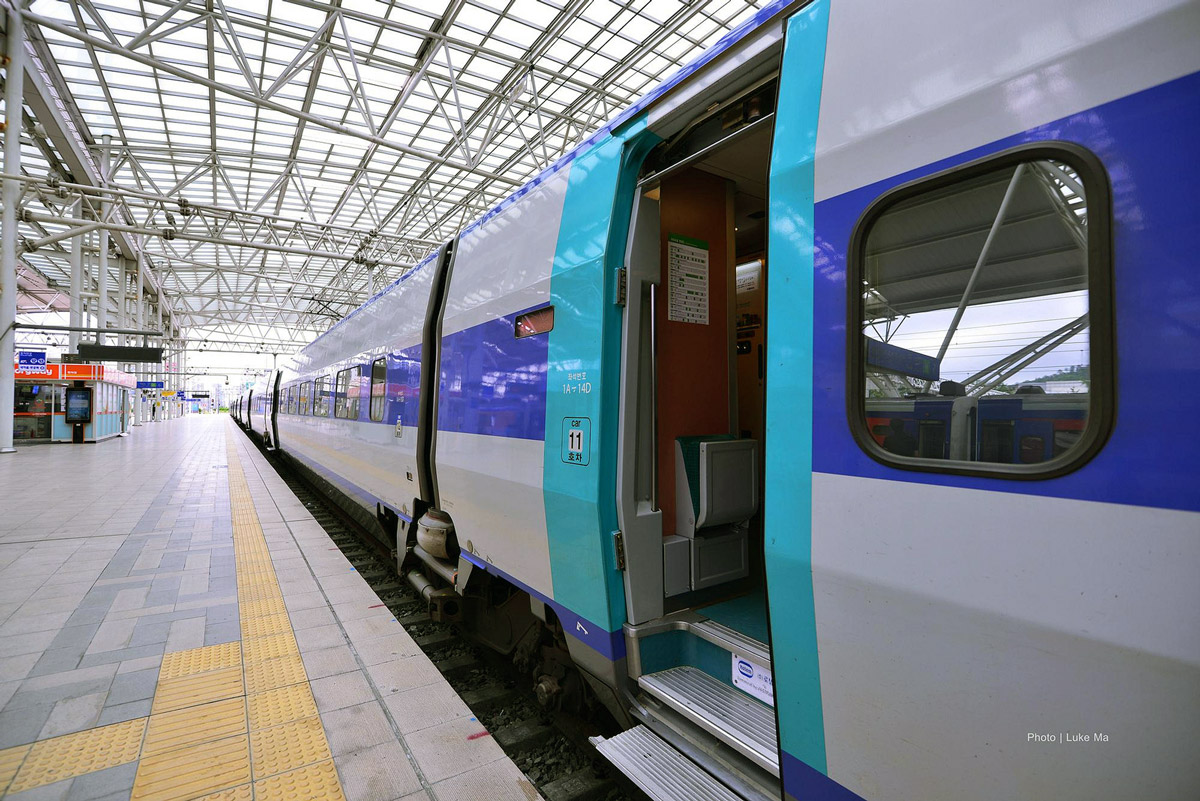
Platform at Seoul Station. Photo © Luke Ma, licensed Creative Commons Attribution.
Seoul has developed one of the world’s most extensive and efficient public transportation networks, which makes bypassing the city’s hair-raising traffic a breeze. Consequently many expatriate residents never see the need to buy a car, though they can still come in handy for large families or longer journeys.Launched in the 1970s and still being extended as you read, Seoul’s vast subway network consists of over a dozen lines that span nearly 1,000 kilometers (180 miles) and ferry some eight million people each day. While some of the stations, particularly major transfer points like Jongo 3-ga or Sindorim, can be crowded and confusing, by and large it’s a very user-friendly system, with all signs and major announcements in Korean and English (and often Chinese). Stations are about two minutes apart and cover nearly every corner of the city, as well as neighboring Incheon and parts of Gyeonggi Province. Delays or breakdowns are extremely rare, but many lines do shut shortly after midnight. Fares start at 1,000 won. Passengers can also purchase electronic stored-value cards that offer a discount of about 10 percent on regular fares and can also be used on buses and even in some taxis and shops.
Given the city’s notoriously unpredictable traffic, the subway is often a better option than buses, but they do link some destinations, particularly within neighborhoods or on the outskirts of Seoul, that the train tends to underserve. Some—but by no means all—buses have bilingual English and Korean signs and stop announcements, and route information is available in English online. Smaller green buses are usually limited to routes in a single neighborhood, while blue buses ply longer routes between neighborhoods and major city centers. Fares start from around 1,000 won. Red buses, which connect far-flung suburbs with central Seoul, cost more.
Taxis are abundant and scandalously cheap compared to other world capitals, with the meter starting at 2,200 won and fares rarely exceeding 10,000 won for standard hops. Mobum or deluxe, taxis, distinguished by their black and gold design, offer a more luxurious ride than the average cab; they’re usually larger sedans with more leg and luggage room and, it’s claimed, especially knowledgeable and courteous drivers. However, they’re about twice as expensive as standard cabs, and most long-term residents see them as necessary only if no regular taxis are available.
Taxi drivers are generally a pleasant and honest enough bunch, although as in any city, you do get a few bad apples. Few speak any amount of English, so it’s always helpful to have your destination or a major landmark nearby written in Korean to show the driver. With most cabs now boasting mobile handsets and onboard GPS navigation systems, the days of endlessly circling an area in a fruitless search for a destination are now basically over. Tipping is not expected, although offers to let the driver keep small amounts of change from a fare are always appreciated.
The only problems you’re likely to experience with cabs will be late at night in major entertainment districts, when a lot of customers are struggling to make their way home and demand for cabs regularly exceeds supply. This sometimes brings out mercenary behavior on the part of drivers, who may want to charge passengers inflated flat fares or refuse services altogether to people who aren’t going somewhere particularly convenient or lucrative. There’s not a lot you can do in these situations except practice patience and wait for the next cab to come along.
Excerpted from the Second Edition of Moon Living Abroad in Korea.